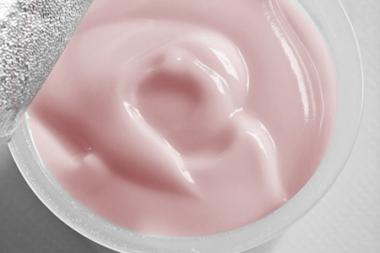The pressure to eat yogurt in America is out of control.
In recent years makers of the tasty snack, once the province of menopausal women and grade-school kids with sack lunches, have been aggressively targeting the minds of the nation’s young and middle-aged adults. The campaign is now going full bore. Big Yogurt is in the throes of a vicious battle for market share. If you are not a yogurt fanatic, you are caught in a dizzy, distinctly unappetizing crossfire.
“I eat Greek yogurt at Starbucks at least four times a week,” a lawyer friend told me by phone from the health-conscious paradise of Los Angeles. “I’ll admit it, I’m a yogurt eater.”
“I’m actually eating some right now,” said a TV writer friend. “We keep a stash of Greek yogurt in the writers’ room.”
Earlier this year, Harry Balzer, vice president with the market research firm NPD Group, declared yogurt the food of the decade. “The versatile dairy product really does define what I think America wants from its food supply,” he said in an interview on NPR. What breakfast food saw the biggest decline? Toast. Toast!
What is wrong with these people?
The clarion calls to consume this multi-functional goop play on a mix of cultural insecurities, and have gotten way out of hand.
Activia is the primary culprit on the constipation front, with commercials featuring a notably peppy Jamie Lee Curtis issuing a challenge to younger ladies to eat Activia for two weeks: “If it doesn’t help naturally regulate your digestive system, we’ll refund your money.”
In February, Activia settled a $45 million class action lawsuit from disgruntled, understandably frustrated folks for whom the purportedly medicinal yogurt had offered no relief. Those who had such an experience should visit dannonsettlement.com; there’s still time get compensation up to $100. It seems the FDA is not so sure about yogurt’s regulatory abilities.
Make no mistake: protein- and live bacteria-laden milk sludge is big business. In 1980, the U.S. yogurt market clocked in at an estimated $300 million. Last year, Mintel International’s latest report on U.S. consumer trends put it at $4.1 billion. Industry titans Dannon and Yoplait between them occupy a 67 percent market share, with French-owned Dannon holding onto a tenuous advantage.
But while yogurt remains a booming business—sales grew 32 percent between 2004 and 2009— the growth rates declined from a steady 6.5 percent to 2.8 percent in ’09. That might have something to do with the increasingly aggressive marketing tactics, pushing sexual imagery and overt references to constipation and yeast infections.
Yogurt eating remains a woman’s pastime—the more intuitive sex represents some 80 percent of this curdled pie. So it isn’t surprising that ladies bear the brunt of the shameless attacks on emotional insecurities that increasingly afflict men as well: namely, that if you can’t fit into an “itsy-bitsy bikini”—the tagline of a recent Yoplait Light spot—you should remain indoors and eat a shitload of yogurt.
The more masculine-sounding Greek yogurt, meanwhile, led by the surge of Fage onto our shores, offers the dream of a body like Adonis’s. Greek Gods yogurt boasts a delectable balance of live and active cultures, including “S. thermophilus and L. bulgaricus, L. acidophilus, Bifidus and L.casei.”
Sounds delicious!
Our national obsession with obesity and the not-unrelated success of the so-called fro-yo industry opened the door for yogurt barons to go demagogue and pervert the issue. The new Dannon “Light and Fit” campaign features the impossibly svelte Heidi Klum tonguing a cup of the functional nectar, declaring after a sensual slurping of the last drop, “I love Light and Fit.” Light and Fit may only shave 20 calories off its Yoplait counterpart, but it’s way sexier. Now it’s available in melon flavor! (Prune flavor, I suppose, would be antithetical to any suggestion of after-yogurt sex … or would it?)
Indeed, the frothing public debate over which yogurt is more “functional” has somehow merged questions of sex, gastronomy and female hygiene into one fetid pile. When even men are buckling to the yogurt tides, forsaking the time-honored American tradition of sizzling breakfast meats for a teacup of probiotic goo, there seems little hope for our nation. One of the more brutish man-beasts I know, who had previously enjoyed steak and eggs or the occasional heuvos rancheros, is now an Activia addict.
“It helps you dump,” he said simply.
A fiercely patriotic Texan who works in investment banking observed that there is a certain “smugness” to the way yogurt eaters discuss their beloved low-cal high-action bacteria sauce. Mavis, who also describes himself as “fiercely regular,” is a devoted bacon-and-eggs man. He’d much sooner tuck in for a bowl of oatmeal than go for the white stuff. Until recently, he was engaged to a European lass, who he says spoke of yogurt “like it’s the fountain of youth.” He’s very glad indeed that he no longer has to deal with the even more extreme brand of European yogurt fanaticism.
The whole idea of an open and breezy society in which conversation can skip lightly from breakfast to bathing suits to how badly you need to take a shit has a distinctly foreign feel to it, one that should be resisted at all costs. On a recent trip to Paris, I attempted to order up a bowl of yogurt, which, I must admit, can be quite delicious.
“Yes, yo-gurt,” I repeated into the receiver.
“Oh, oui,” replied the governess of our quaint hotel. “Activia?”
I lost my appetite.



